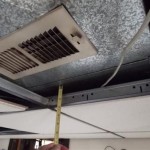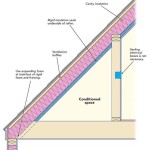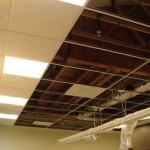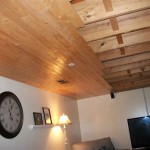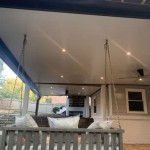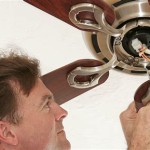How to Remove Water Stains From Popcorn Ceiling
Popcorn ceilings, once a ubiquitous feature in residential buildings, are notoriously susceptible to water damage. The textured surface, designed to diffuse light and conceal imperfections, unfortunately also readily absorbs moisture, leading to unsightly stains. These stains are not only aesthetically displeasing but can also indicate underlying problems such as roof leaks, plumbing issues, or condensation buildup. Addressing water stains on a popcorn ceiling requires a meticulous approach, balancing effective stain removal with the delicate nature of the material.
The porous and often fragile nature of popcorn ceiling material demands careful handling to prevent further damage during the cleaning process. Aggressive scrubbing or the use of harsh chemicals can easily dislodge the texture, creating more noticeable blemishes than the initial stain. Therefore, understanding the proper techniques and selecting appropriate cleaning agents are crucial for successful stain removal. Before attempting any cleaning method, it is imperative to identify and rectify the source of the water leak to prevent recurrence of the problem.
The complexity of removing water stains from popcorn ceilings depends on several factors, including the severity and age of the stain, the type of stain (e.g., water damage vs. mildew), and the composition of the ceiling material itself. Older popcorn ceilings may contain asbestos, a hazardous material that requires professional abatement before any disturbance or remediation work is undertaken. If there is any suspicion of asbestos content, it is essential to cease all work immediately and consult with a qualified asbestos inspector.
Assuming the ceiling is asbestos-free and the water leak has been addressed, the following steps outline a comprehensive approach to removing water stains from popcorn ceilings.
Key Point 1: Preparation and Safety Measures
Prior to commencing any cleaning operation, proper preparation is paramount to protect both the surrounding environment and personal health. Spread drop cloths or plastic sheeting across the floor beneath the affected area to catch any falling debris or cleaning solution. This will prevent further staining or damage to the flooring and simplify the cleanup process.
Personal protective equipment (PPE) is also essential. Wear safety glasses to shield the eyes from potential splashes or falling particles. A dust mask or respirator is recommended to avoid inhaling airborne particles, especially if the ceiling material is old or easily crumbles. Rubber gloves will protect the skin from cleaning solutions and potential irritants.
Adequate ventilation is crucial during the cleaning process. Open windows and doors to ensure proper airflow, especially when using cleaning solutions that may emit fumes. If natural ventilation is insufficient, consider using a fan to circulate air.
Before applying any cleaning solution to the stained area, it is advisable to test it on an inconspicuous spot of the ceiling. This will help determine if the solution causes any adverse reactions, such as discoloration or texture damage. Allow the test area to dry completely before proceeding with the full cleaning process.
Key Point 2: Cleaning Methods for Water Stains
Several cleaning methods can be employed to remove water stains from popcorn ceilings, ranging from gentle solutions to more intensive treatments. The choice of method depends on the severity of the stain and the sensitivity of the ceiling material.
Dry Sponge Method: For light, recent water stains, a dry sponge may be sufficient to lift the discoloration. Use a clean, dry sponge (preferably a natural sea sponge) and gently blot the stained area. Avoid rubbing, as this can damage the texture. Apply light pressure and work from the outer edges of the stain towards the center. Regularly clean the sponge to prevent re-depositing dirt and debris.
Mild Soap and Water Solution: For more stubborn stains, a mild soap and water solution may be necessary. Mix a few drops of mild dish soap with warm water. Dip a clean sponge into the solution, wring it out thoroughly to prevent oversaturation, and gently blot the stained area. Again, avoid rubbing. After blotting with the soapy solution, blot the area with a clean, damp sponge to remove any soap residue. Allow the area to air dry completely.
Baking Soda Paste: Baking soda is a natural abrasive and deodorizer that can be effective for removing water stains. Mix baking soda with a small amount of water to form a thick paste. Apply the paste to the stained area and allow it to sit for 15-20 minutes. Gently blot the area with a clean, damp sponge to remove the paste. Allow the area to air dry completely.
Hydrogen Peroxide: Hydrogen peroxide is a mild bleaching agent that can be used to lighten stubborn water stains. Dilute hydrogen peroxide with water (a 1:1 ratio is generally recommended). Apply the solution to the stained area using a spray bottle or a sponge. Allow the solution to sit for 10-15 minutes. Gently blot the area with a clean, damp sponge to remove the solution. Allow the area to air dry completely. Exercise caution when using hydrogen peroxide, as it can potentially lighten the ceiling material.
Stain-Blocking Primer and Paint: If the above methods fail to remove the stain completely, or if the stain is particularly severe, it may be necessary to seal the stained area with a stain-blocking primer and then repaint the ceiling. Apply a thin coat of stain-blocking primer to the stained area, using a brush or a foam roller. Allow the primer to dry completely according to the manufacturer's instructions. Then, apply a coat of ceiling paint that matches the existing ceiling color and texture. Consider using a specialized popcorn ceiling paint for best results. Apply the paint in thin, even coats, allowing each coat to dry completely before applying the next.
Key Point 3: Post-Cleaning Procedures and Prevention
After cleaning the water stain, it is crucial to properly dry the affected area to prevent the growth of mold or mildew. Use a fan to circulate air and expedite the drying process. Ensure that the area is completely dry before reassembling any furniture or removing the drop cloths.
Inspect the cleaned area regularly for any signs of recurring stains or moisture. If the stain reappears, it indicates that the source of the water leak has not been completely resolved. Promptly address any underlying plumbing issues, roof leaks, or condensation problems to prevent further damage to the ceiling.
Maintaining proper ventilation throughout the house can help prevent condensation buildup, which is a common cause of water stains on ceilings. Use exhaust fans in bathrooms and kitchens to remove moisture from the air. Consider using a dehumidifier in damp basements or other areas prone to moisture buildup.
Regularly inspect the roof and plumbing system for any signs of leaks or damage. Address any issues promptly to prevent water from seeping into the ceiling. Consider having a professional inspection performed periodically to identify potential problems before they escalate.
When painting popcorn ceilings, use a high-quality, moisture-resistant paint to provide added protection against water damage. This will help prevent stains from forming in the future and make the ceiling easier to clean.
By following these steps, it is possible to effectively remove water stains from popcorn ceilings and prevent their recurrence. Remember that patience and a gentle approach are key to preserving the delicate texture of the ceiling material. If in doubt, consult with a professional cleaning service or contractor experienced in popcorn ceiling repair and stain removal.

Popcorn Ceiling How To Remove An Ugly Stain Drywall Repairman Water Damage Repair

What Should I Do About Water Stains On A Popcorn Williams Painting

How To Remove Water Stains From Popcorn Ceiling At Home Without Paint Homax Texture Spray

How To Fix Water Stains On Ceiling Leaks Super Easy Steps Abbotts At Home

How To Fix Water Damage On Popcorn Ceilings

How To Fix Water Damage On Popcorn Ceilings

How To Repair A Water Damaged Popcorn Ceiling

We Have An Old Water Stain On Our Ceiling How Do I Cover It Hometalk
How To Clean Smoke Stains Off A Popcorn Ceiling

How To Repair A Water Damaged Popcorn Ceiling
Related Posts


